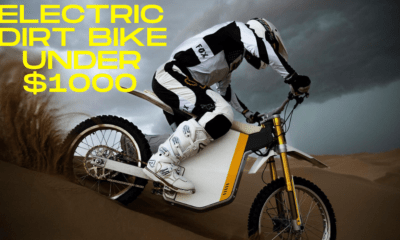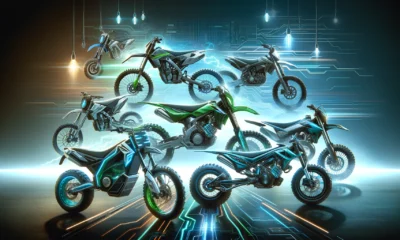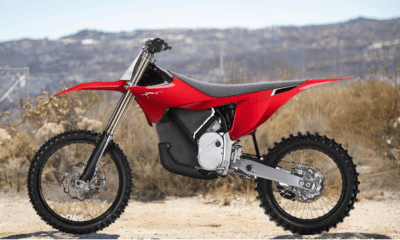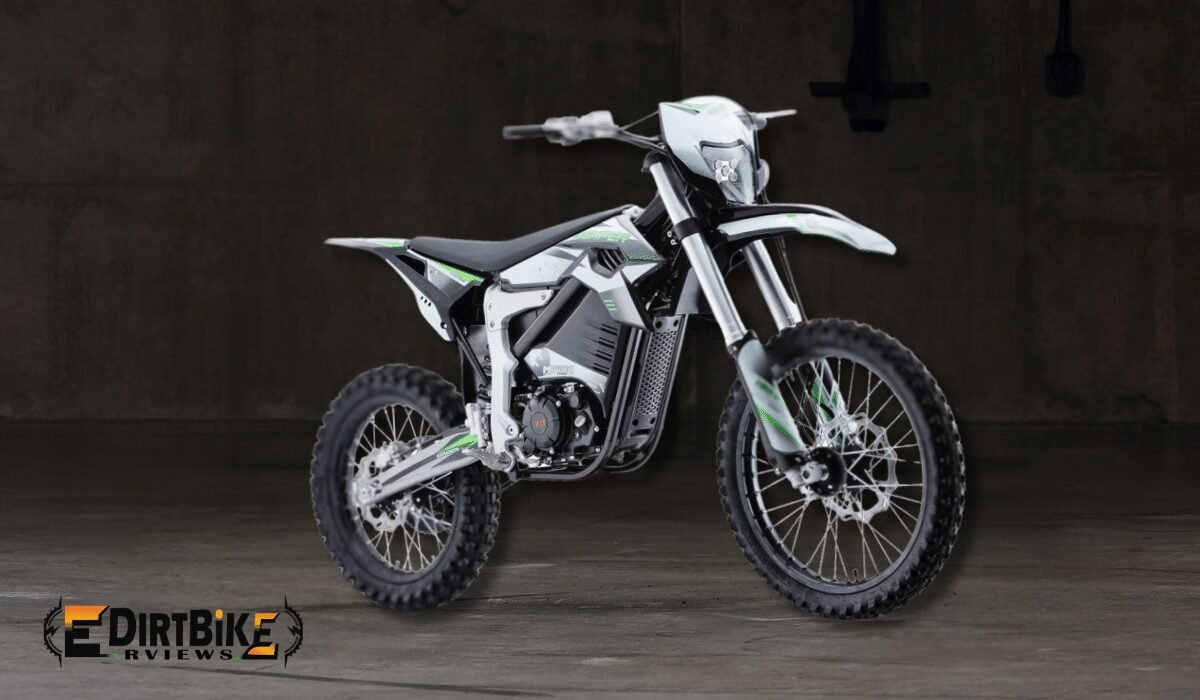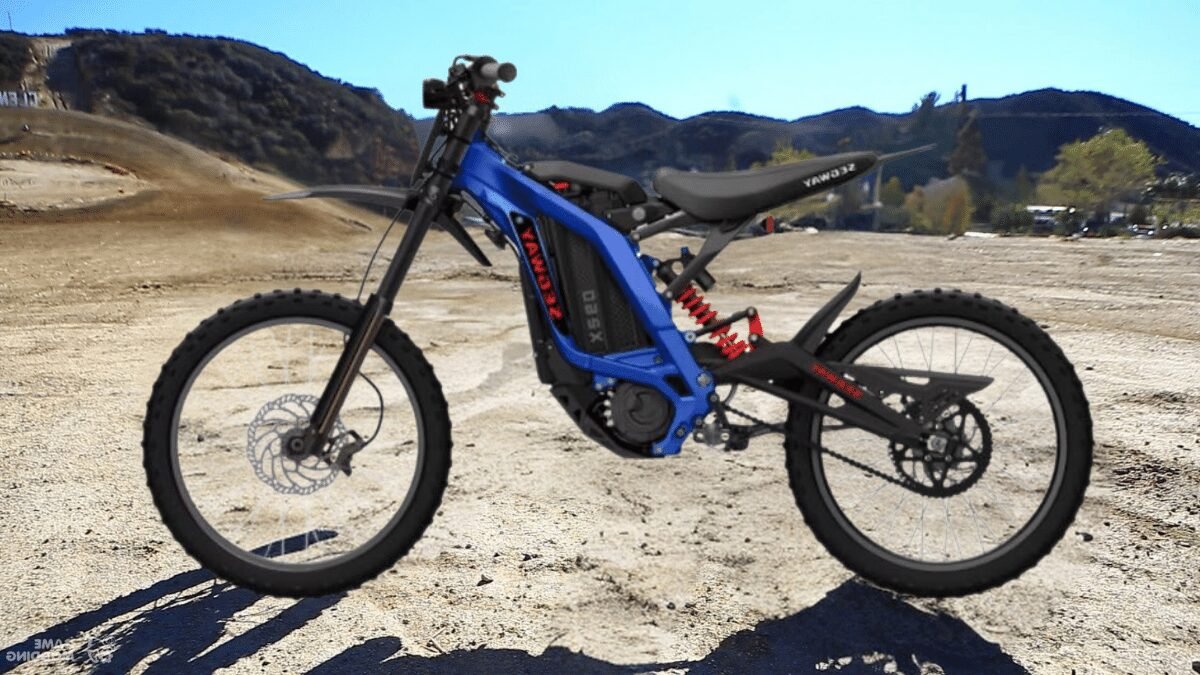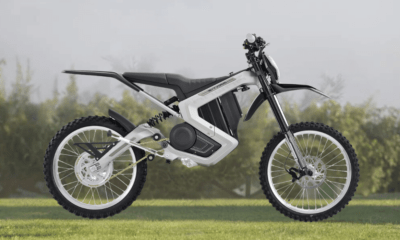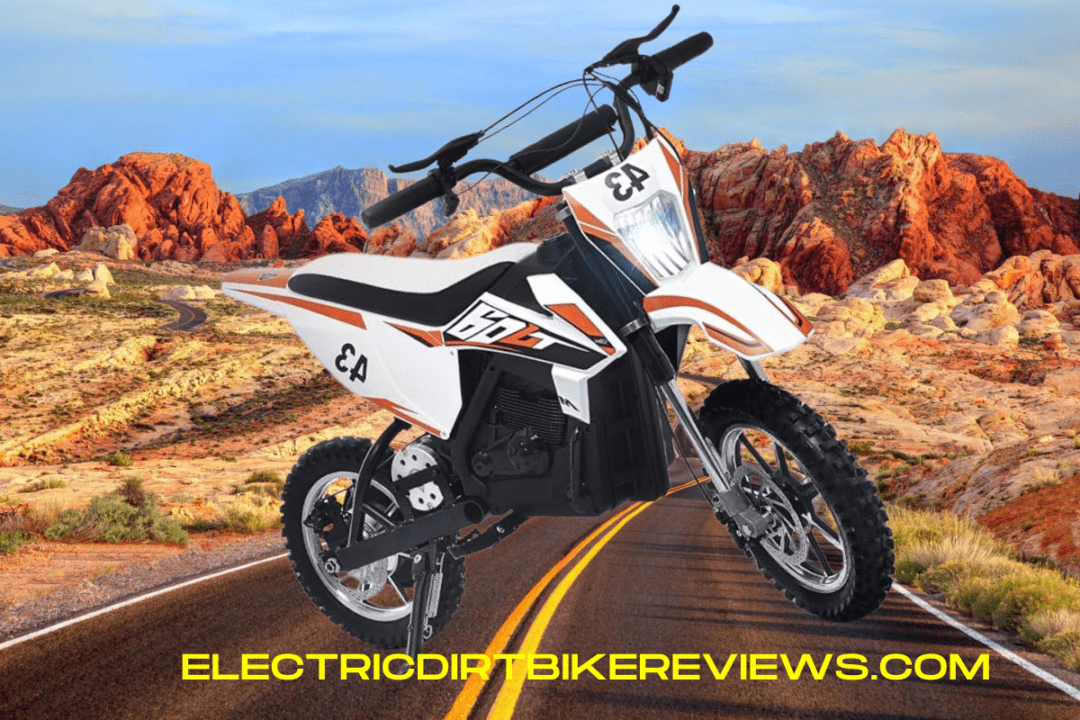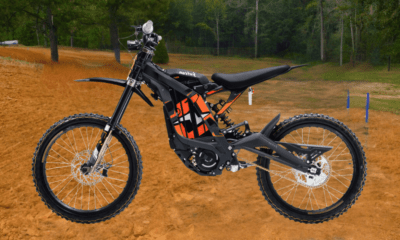E-Bike Tips & Guides
Electric vs. Gas Dirt Bikes for Kids: A Comprehensive Guide for Informed Choices
Explore the world of kids’ dirt bikes! Dive into our guide comparing Electric vs. Gas Dirt Bikes for Kids..
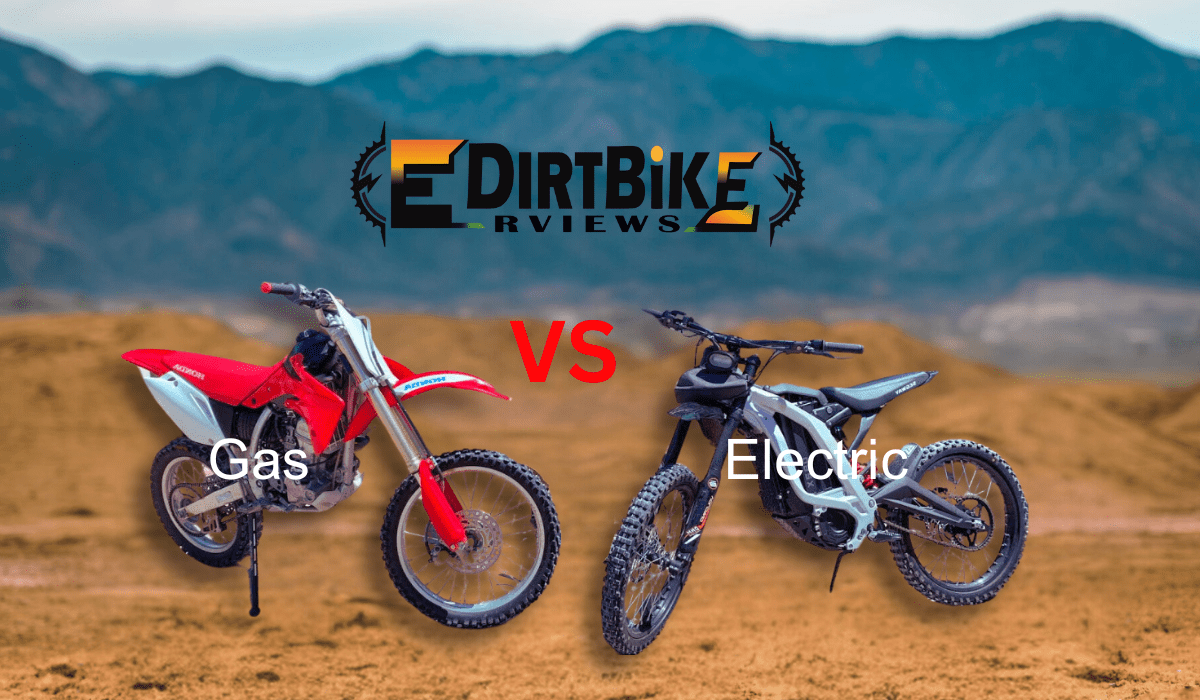
Dirt biking, an adventure-filled sport, captures the imagination of kids worldwide. It’s more than just a pastime; it’s a way to explore, learn, and grow. In this age of diverse choices, the decision between electric vs gas dirt bikes for kids is significant for parents and young enthusiasts. This guide delves into the intricate world of kids’ dirt bikes, laying out the specifics of electric and gas models. Our aim? To arm you with knowledge, make the right choice as smooth as the ride on your kid’s new bike.
Understanding the differences between electric and gas dirt bikes is crucial. It’s not just about the roar of the engine or the silence of the motor; it’s about what suits your child’s needs, skill level, and the environment you’re in. Both types of bikes offer unique experiences, and we’re here to help you navigate these options easily.
Choosing the right dirt bike for your child is more than a purchase; it’s an investment in their happiness, skills, and safety. With our comprehensive guide, we ensure you have all the information you need, from the mechanics of these bikes to their environmental impact. Whether you lean towards the eco-friendly electric option or the classic gas motorcycle, we’ve got you covered.
Table of Contents
Understanding Dirt Bikes for Kids
Dirt Bikes Defined
A dirt bike, in its essence, is a lightweight motorcycle designed for off-road riding. These bikes have rugged tires, a suspension system suited for bumpy terrains, and a frame built for agility and durability. The design prioritizes handling and performance on dirt trails, hills, and other off-road scenarios, making them a popular choice for adventure-loving kids.
Electric Dirt Bikes: The New Age Choice
Electric dirt bikes are a modern take on this off-road classic. They are powered by rechargeable batteries and an electric motor, offering a quieter, more eco-friendly ride. These bikes have become increasingly popular due to their minimal environmental impact and lower operating noise. They are often preferred in residential areas where noise can be a concern. Additionally, electric bikes tend to have fewer mechanical parts, which can mean less maintenance.
Gas Dirt Bikes: The Classic Thrill
Gas dirt bikes, on the other hand, are powered by gasoline engines. They offer a visceral riding experience with their powerful engines and the characteristic roar that many associate with off-roading excitement. These bikes have been around for decades, evolving with advancements in technology and design. Gas models typically provide a broader range of power options and can be more suitable for varied and challenging terrains.
Understanding these key differences is the first step in determining which type of bike is the best fit for your child. Both electric and gas dirt bikes have unique features that cater to different preferences and requirements.
Electric Dirt Bikes for Kids
Features and Technology
Electric dirt bikes for kids are known for their advanced technology. They are equipped with rechargeable batteries, usually lithium-ion, which power an electric motor. This setup provides a smooth and consistent power output, ideal for young riders learning to navigate off-road terrains. The absence of a Gas gearbox and clutch system in most electric bikes makes them easier to handle, especially for beginners.
One of the standout features of electric dirt bikes is their near-silent operation. This lack of noise is more neighbor-friendly and allows young riders to focus better on their riding technique and environment.
Benefits
- Environmental Friendliness: Electric dirt bikes produce zero emissions, making them a more eco-friendly option than their gasoline counterparts.
- Lower Maintenance: With fewer moving parts than gas bikes, electric dirt bikes typically require less maintenance, which can be a relief for parents.
- Ease of Use: The straightforward operation of electric dirt bikes, with no need to manage a clutch or shift gears, makes them more accessible to beginners.
Drawbacks
- Limited Range: The range of electric dirt bikes is often less than gas bikes, limited by battery life. This can be a consideration for longer riding sessions.
- Charging Time: Recharging the batteries can take several hours, which requires some planning and potentially limits riding time.
- Initial Cost: Electric dirt bikes can have a higher upfront cost than gas bikes, mainly due to the cost of battery technology.
Safety Aspects
Safety is paramount when it comes to kids and dirt biking. Electric dirt bikes offer a few safety advantages. The controlled power delivery helps prevent overwhelming the rider, and the absence of hot exhaust pipes reduces the risk of burns. Moreover, the quiet operation allows young riders to hear their surroundings better, potentially increasing their awareness and safety.
What is Better Electric or Gas Dirt Bike
Electric dirt bikes are better for beginners and the environment, while gas bikes offer more power and longer ride times.
They are an excellent choice for parents looking for a cleaner, quieter, and user-friendly option for their kids. They are especially suited for beginners and those who prefer riding in residential areas or places where noise pollution is a concern.
Gas Dirt Bikes for Kids.
Features and Technology
Gas dirt bikes are powered by gasoline engines, which come in various sizes and power outputs suitable for different age groups and skill levels. Unlike electric bikes, they have a mechanical clutch and gearbox, which young riders can learn to operate. This aspect of gas dirt biking is often seen as a valuable skill-building opportunity, teaching kids about mechanical operations and control.
The engine’s roar, the smell of gasoline, and the tactile feedback of a gas dirt bike create a sensory experience that many enthusiasts find appealing. These bikes also tend to have a more robust power delivery, offering a sense of exhilaration and challenge that can be thrilling for young riders.
Benefits
- Extended Range and Refueling: One of the critical advantages of gas dirt bikes is their extended range. Refueling takes just a few minutes compared to the hours needed to recharge an electric bike’s battery.
- Power and Performance: Gas dirt bikes generally offer more power, which can benefit more experienced young riders looking for a challenging ride.
- Skill Development: Learning to operate a clutch and shift gears can be an educational experience, equipping kids with skills transferable to other motorcycles.
Drawbacks
- Environmental Impact: Gas dirt bikes emit exhaust fumes, contributing to air pollution and noise, which might concern environmentally conscious families.
- Maintenance Requirements: With more mechanical parts, gas dirt bikes require more regular maintenance, which can be a learning opportunity and a responsibility.
- Noise Level: The noise produced by gasoline engines can limit the areas where these bikes can be ridden, especially near residential zones.
Safety Aspects
Regarding safety, gas dirt bikes demand a bit more from their riders. The power delivery can be abrupt, requiring more skill to manage. Also, components like hot exhaust pipes must be considered to avoid burns. However, these challenges can also be beneficial, teaching young riders respect for power and enhancing their motor skills and judgment.
Gas dirt bikes offer a classic, power-packed experience that can be deeply rewarding for kids. They are especially suitable for those ready to tackle more challenging terrains and enjoy the mechanical aspects of riding.
Comparative Analysis: Electric vs. Gas Dirt Bikes for Kids
When choosing between an electric and a gas dirt bike for your child, understanding the differences in performance, cost, maintenance, and environmental impact is crucial. This comparative analysis aims to provide a clear picture of how these two types of bikes stack against each other, helping you make a well-informed decision.
Performance Comparison
- Power Delivery: Gas dirt bikes are known for their robust power and acceleration. They suit adventurous kids who are ready for a more challenging ride. Electric dirt bikes, however, offer smoother and more controlled power, ideal for beginners or younger riders.
- Riding Range and Duration: With their quick refueling capability, gas bikes are preferable for longer rides. Electric bicycles, while limited by battery life, offer ample ride time for most casual and beginner riders.
- Handling and Weight: Electric dirt bikes are often lighter and easier to handle, beneficial for younger or less experienced riders. Gas bikes, with their more complex mechanics, can offer a more hands-on experience in riding dynamics.
Cost and Maintenance
- Initial Investment: Electric dirt bikes generally have a higher initial cost due to battery technology. Gas dirt bikes, while potentially cheaper upfront, might incur more costs over time.
- Maintenance Needs: Electric bikes score high in low maintenance requirements, lacking the intricate engine parts of gas bikes. Conversely, gas bikes demand regular maintenance, which can be both a cost and an educational opportunity.
Environmental Impact
Electric dirt bikes are environmentally friendly, producing zero emissions and operating quietly. Though improving in efficiency, gas dirt bikes still have an environmental footprint due to their gasoline engines and noise levels.
Choosing the Right Gas Dirt Bike for Your Kid
The decision ultimately hinges on several factors:
- Skill Level and Experience: Beginners might benefit from the user-friendly nature of electric bikes, while more experienced young riders might prefer the power of gas bikes.
- Riding Environment: Consider where the bike will be used. If noise is a concern, electric bikes are advantageous.
- Interest in Mechanics: Gas bikes offer a hands-on experience with mechanical components, which can be fascinating for some kids.
- Budget and Long-Term Costs: Evaluate your budget for initial purchase and ongoing expenses like maintenance and fuel or electricity costs.
In conclusion, both electric and gas dirt bikes have their merits. An electric bike offers a modern, eco-friendly, and easy-to-ride option, perfect for beginners and those in noise-sensitive areas. On the other hand, gas dirt bikes offer a more conventional riding experience with powerful engines and the opportunity to learn mechanical skills.
Choosing the Right Electric Dirt Bike for Your Kid
Selecting the right dirt bike for your child is a decision that goes beyond mere preference. It involves considering various factors to ensure the motorcycle brings joy and supports your child’s development and safety. This section will guide you through critical considerations to help you choose the best dirt bike for your kid.
Factors to Consider
- Child’s Age and Size: The size and power of the bike should be appropriate for your child’s age and physical stature. A bike that is too big or powerful can be difficult and dangerous to handle.
- Experience and Skill Level: An electric bike with easier handling might be more suitable for beginners. More experienced riders might prefer the challenge and versatility of a gas dirt bike.
- Riding Terrain: Consider where the bike will be used. Electric bikes are better for residential areas or places where noise is a concern, while gas bikes are more suited for diverse, challenging terrains.
- Maintenance and Upkeep: Electric bikes are a great choice if you’re not mechanically inclined or prefer a low-maintenance option. Gas bikes require more regular maintenance, which can be a learning opportunity but also a commitment.
- Budget: Factor in the initial cost of the bike and ongoing expenses such as maintenance, fuel, or electricity.
Age and Skill Level Considerations
- Younger or Less Experienced Riders: An electric bike can offer a safer, more controlled introduction to dirt biking. Its manageable power and simple operation make it a good starter bike.
- Older or More Experienced Riders: A gas dirt bike might be more appealing for its performance and the hands-on experience it provides.
Terrain and Usage
- Casual Riding in Controlled Environments: Electric bikes are ideal for casual riding, especially in noise-sensitive areas.
- Adventurous Riding on Varied Terrains: Gas bikes are better suited for more adventurous riding on diverse terrains, offering more power and versatility.
Choosing an electric and gas dirt bike for your kid depends on practical considerations and personal preferences. Assessing your child’s needs, interests, and the practical aspects of ownership will lead you to the ideal choice.
Personal Opinion
In this section, I offer a personal perspective based on extensive research and experience in the field of kids’ dirt bikes. This insight aims to add another layer to your decision-making process, helping you choose between an electric and a gas dirt bike for your child.
Insights Based on Experience and Research
Having observed and studied the evolution of kids’ dirt biking, it’s evident that electric and gas bikes have significant roles to play. Here are some personal observations:
- Adaptability and Learning Curve: Electric dirt bikes are incredibly adaptive for beginners. They allow young riders to focus on balance and control without being overwhelmed by power. This can be a huge confidence booster.
- Engagement with Mechanics: Gas dirt bikes offer a hands-on mechanical experience. Learning to maintain and troubleshoot a gas bike can be an enriching experience for kids interested in how things work.
- Environmental Consciousness: In an era where environmental impact is increasingly essential, electric dirt bikes stand out. They offer a responsible choice, aligning with a growing emphasis on sustainability.
- The Thrill Factor: It’s hard to ignore the thrill that gas dirt bikes offer. The sound, the power, and the control required can be exhilarating for kids who are ready for it.
Recommendations for Different Scenarios
- For the Young or Beginner Rider: An electric dirt bike is highly recommended. Its ease of use, safety, and quiet operation make it an excellent starting point.
- For the Environmentally Conscious Family: Electric dirt bikes align well with eco-friendly values, offering kids a responsible and fun option.
- For the Adventure-Seeking, Experienced Young Rider: A gas dirt bike can be more suitable, offering a more intense and engaging experience.
- For Families Interested in Mechanical Education: The gas dirt bike provides a practical way to learn about engines, maintenance, and mechanical skills.
In conclusion, your kid’s choice between an electric and gas dirt bike should be influenced by their interest, skill levels, and family values. Both types offer unique experiences and learning opportunities. It’s about finding the right fit that will ensure safety and fun and foster growth and learning in your young rider.
Conclusion
As we reach the end of our comprehensive guide on electric vs. gas dirt bikes for kids, it’s clear that both options have unique advantages and considerations. Choosing an electric and a conventional dirt bike for your child ultimately hinges on a blend of personal preferences, practical considerations, and your young rider’s specific needs and interests.
Key Points to Remember
- Electric Dirt Bikes: Ideal for beginners and younger riders, offering a safer, more controlled, and environmentally friendly option. They are perfect for noise-sensitive areas and require less maintenance.
- Gas Dirt Bikes: Suitable for more experienced young riders seeking a more thrilling and hands-on experience. They offer a broader range of power and are ideal for diverse terrains.
Encouraging Safe and Informed Decision-Making
No matter which type of dirt bike you choose, the most important factors are safety, suitability for your child’s ability, and the joy it brings them. Encourage responsible riding habits, invest in proper safety gear, and ensure your child is supervised, especially during their initial rides.
Remember, dirt biking is not just about the ride; it’s about the experiences, skills, and memories your child will gain. Whether you opt for the modern, eco-friendly electric bike or the gas, adrenaline-fueled gasoline bike, you’re opening the door to adventure and learning for your child.
We hope this guide has provided valuable insights and information to help you make the best choice for your child’s dirt biking journey. Happy riding!
E-Bike Tips & Guides
Weather Impact on Electric Dirt Biking
Explore the dynamic between electric dirt bikes and varying weather conditions, including how temperature, rain, and terrain affect performance. Learn maintenance and riding tips for optimal biking experience.
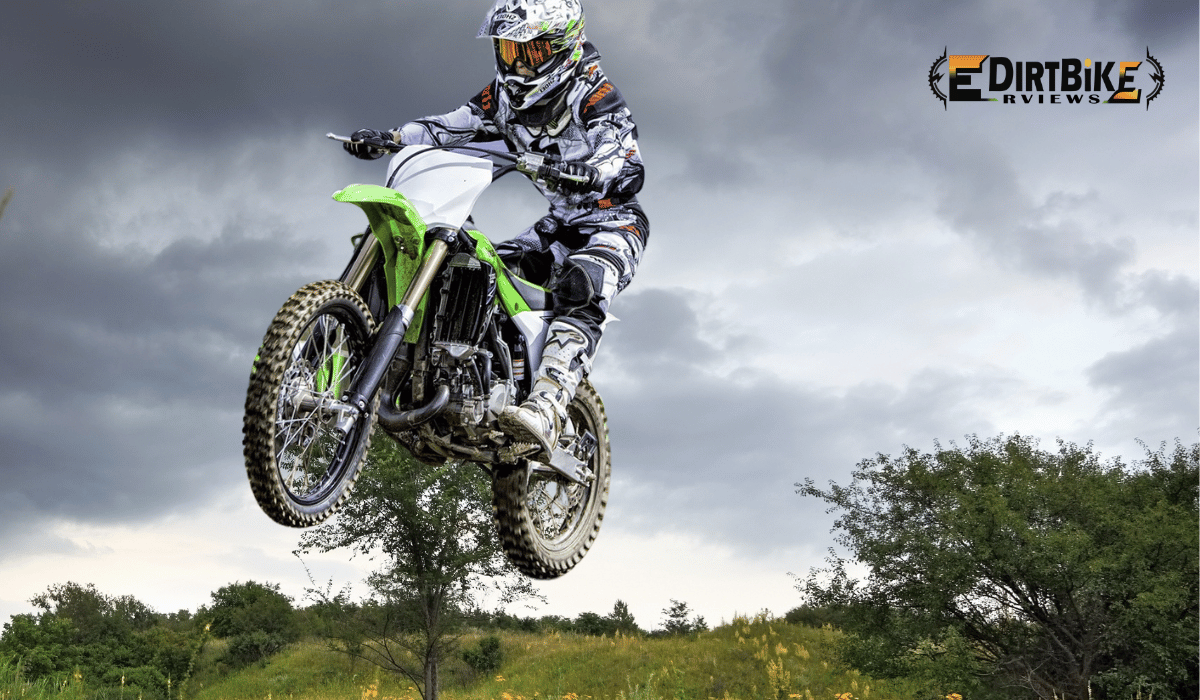
Understanding the impact of weather on electric dirt biking is crucial for both the safety and enjoyment of the rider, as well as for the longevity and performance of the bike. Weather conditions can dramatically affect the riding experience, from altering the bike’s handling and efficiency to challenging the rider’s skills and preparedness. For instance, wet conditions can affect traction and braking, while extreme temperatures can influence battery performance and bike reliability.
Moreover, as electric dirt bikes rely on electrical components and battery systems, they are susceptible to weather-related challenges unique to traditional bikes. Elements like rain, mud, snow, and extreme temperatures can significantly impact the electrical systems, battery life, and overall bike durability. Therefore, riders need to know how different weather conditions can affect their bike’s performance and how to prepare and respond to these challenges adequately.
Electric dirt biking is an exhilarating sport and a testament to the advancements in sustainable transportation. However, with this innovation comes the need to understand and adapt to how weather can influence the electric dirt biking experience. This knowledge ensures the rider’s safety and enjoyment and the optimal performance and longevity of their electric dirt bike.
Table of Contents
The Influence of Weather on Electric Dirt Bike Performance
Temperature Effects
Temperature fluctuations notably influence the performance of electric dirt bikes. Batteries, the powerhouse of these bikes, are sensitive to extreme temperatures. Battery capacity can decrease in cold conditions, reducing range and power output. The cold can cause the batteries to discharge more quickly and reduce efficiency. Conversely, in sweltering conditions, batteries can overheat, which may lead to thermal throttling, where the system reduces power output to prevent damage. This thermal effect can also accelerate battery degradation over time, affecting the long-term performance and reliability of the bike.
Rain and Water Exposure
Electric dirt bikes, like all electrical systems, have a degree of vulnerability to water. While many modern electric bikes are designed with waterproofing features to withstand typical wet conditions encountered off-road, prolonged exposure to water or riding in heavy rain can still pose risks. Water can penetrate seals and enclosures, potentially damaging the electrical components and battery. Furthermore, wet conditions can affect traction and braking, increasing the risk of accidents. Riders must understand their bike’s water resistance capabilities and take appropriate measures to protect it from excessive water exposure.
Wind Conditions
Wind can also impact the riding experience on an electric dirt bike, though the effects are more indirect than temperature and rain. Strong winds can make riding more challenging, especially in open or exposed areas, by affecting stability and rider control. Crosswinds can push the rider off course, requiring more effort to maintain balance and direction. Additionally, headwinds can cause increased energy consumption as the rider and bike work harder against the wind resistance, potentially reducing the bike’s range.
Terrain and Weather Interplay
The interplay between terrain and weather significantly affects electric dirt bike performance. Varied terrains like mud, sand, and snow can behave differently under various weather conditions, affecting traction and control. For example, mud can become more slippery and challenging to navigate after rain, requiring more power and battery usage to maintain speed and control. Snow and ice can reduce traction, necessitating careful handling to prevent accidents. The bike’s performance on these terrains, influenced by weather conditions, highlights the importance of understanding and adapting to the combined effects of weather and terrain for safe and efficient riding.
In conclusion, the performance of electric dirt bikes is considerably affected by weather conditions, including temperature variations, rain and water exposure, wind, and the complex interaction between terrain and weather. Riders must be aware of these factors and prepare accordingly to ensure their safety and the optimal functioning of their bikes in diverse weather conditions.
Electric Dirt Bike Design for Weather Adaptability
Waterproofing and Water Resistance
Manufacturers of electric dirt bikes prioritize waterproofing and water resistance in their designs to enhance the bikes’ adaptability to various weather conditions. Critical components such as the battery, motor, and control systems are encased in waterproof or water-resistant housings to prevent moisture ingress. Seals and gaskets are employed at junctures and openings to block water. At the same time, protective coatings on electrical circuits and connectors provide an additional defense against corrosion and short-circuiting. These design features ensure electric dirt bikes can withstand rain and wet terrain exposure, allowing riders to navigate through challenging conditions without compromising the bike’s performance or safety.
Temperature Management Systems
Electric dirt bikes are equipped with temperature management systems to address the challenges posed by temperature extremes. These systems are designed to maintain optimal battery and motor performance in hot and cold conditions. In cold weather, battery management systems (BMS) can include thermal insulation and heating mechanisms to prevent the battery’s temperature from dropping too low, thus preserving its efficiency and range. In contrast, for hot weather conditions, these systems often feature cooling technologies like air or liquid cooling to dissipate excess heat and prevent overheating. By regulating the temperature, these management systems protect the bike’s components, ensuring consistent performance and prolonging the lifespan of the battery and motor.
Durability in Various Weather Conditions
The overall durability of electric dirt bikes in diverse weather conditions is a critical consideration in their design. Materials used in the construction of the bike, such as frames, casings, and external components, are chosen for their strength, corrosion resistance, and ability to withstand environmental stress. This includes using alloys and plastics that resist rust and decay when exposed to moisture, mud, or salt. The design also considers the impact of UV radiation, ensuring that materials do not degrade quickly when exposed to sunlight for prolonged periods. These design choices ensure that electric dirt bikes remain robust and reliable, whether ridden in scorching heat, cold, or during torrential rains.
In conclusion, the design of electric dirt bikes for weather adaptability focuses on waterproofing, temperature management, and overall durability. These features collectively ensure that the bikes can withstand and perform optimally in various weather conditions, providing riders with confidence in the reliability and safety of their electric dirt bikes regardless of the environmental challenges they face.
Riding Strategies in Different Weather Conditions
Tips for Wet Conditions
Riding an electric dirt bike in wet conditions requires careful preparation and technique. Firstly, riders should ensure their bike’s waterproofing is up to standard to prevent water-related damage. When navigating wet terrain, reducing speed and using gentle, smooth inputs for throttle, brakes, and steering can help maintain control and prevent skidding or sliding. Avoiding deep puddles or streams where water could submerge critical components is also essential. Tires with appropriate tread patterns can enhance grip in slippery conditions, and riders should wear waterproof gear to stay dry and focused.
Handling Cold Weather Riding
Cold weather can significantly impact battery performance and rider comfort. Riders should store their electric dirt bike in a temperature-controlled environment to maximize battery life and efficiency when not in use. Pre-warming the battery before riding can also help. On the trail, conserving battery power by maintaining a steady pace and avoiding unnecessary acceleration is wise. Dressing in layers with thermal and windproof clothing will keep the rider warm and reduce the cold’s impact on performance and endurance.
Strategies for Windy Conditions
In windy conditions, the key is to reduce the bike’s profile against the wind and maintain stability. Leaning slightly into the wind can help counteract its force. Riders should be prepared for sudden gusts, keeping a relaxed grip on the handlebars to allow quick adjustments. Reducing speed and avoiding risky maneuvers is also advisable, as wind can unpredictably affect the bike’s path. Choosing routes sheltered from the wind, when possible, can make for a more enjoyable and less exhausting ride.
Adapting to Changing Terrains
Electric dirt bikes must handle a variety of terrains, which can change rapidly with the weather. Riders should be observant and ready to adjust their riding style accordingly. For instance, it may be necessary to shift weight rearward to improve traction in muddy or sandy conditions. On rocky or uneven terrain, standing on the pegs can help absorb shocks and give better control. It’s crucial to continuously assess the terrain and adjust speed, riding position, and bike settings (like suspension and power delivery) to safely and effectively navigate different landscapes.
In conclusion, riding an electric dirt bike in varying weather conditions demands adaptability and skill. By employing strategies tailored to wet, cold, and windy environments and being prepared to adjust to changing terrains, riders can enhance their experience and ensure both their safety and the longevity of their bike.
Maintenance and Care for Electric Dirt Bikes in Varied Climates
Routine Checks and Maintenance
Regular maintenance is essential for electric dirt bikes’ optimal performance and longevity, especially when ridden in varied climates. Routine checks should include inspecting the battery’s charge level and health, ensuring all electrical connections are secure and corrosion-free, and verifying that the motor and controller are functioning correctly. Mechanical components like brakes, suspension, and tires also need regular inspection for wear and proper operation. It’s essential to follow the manufacturer’s recommended service intervals and to promptly address any issues to prevent minor problems from escalating into significant failures.
Post-Ride Care in Adverse Weather
After riding in rain, snow, or dusty conditions, cleaning the bike properly is crucial to remove any debris, moisture, or corrosive substances that could damage its components. Start by gently rinsing the bike to wash away mud and grime, avoiding direct water spray on sensitive electrical parts. To prevent moisture-related issues, dry the bike thoroughly, especially around electrical connections and battery compartments. Lubricating moving parts, such as the chain and suspension pivots, can help protect them from rust and wear. Inspecting the bike for any damage caused by exposure to harsh conditions should be part of the post-ride care routine.
Long-term Storage and Weather Considerations
When storing an electric dirt bike for extended periods, particularly in regions with extreme weather, it’s essential to consider the environment’s impact on the bike’s components. The battery should be stored at a moderate temperature and charged to the level recommended by the manufacturer to maintain its health. The storage area should be dry and free from extreme temperature fluctuations to prevent damage to the bike’s electrical and mechanical systems. Covering the motorcycle with a breathable, waterproof cover can protect it from dust and moisture. Additionally, periodic checks during storage can help ensure that the bike remains in good condition and is ready to perform reliably when next used.
In summary, maintaining and caring for an electric dirt bike in varied climates involves routine checks, diligent post-ride care, and proper storage practices. These efforts help to ensure the bike’s reliability, performance, and longevity, enabling riders to enjoy their electric dirt biking experience in any weather condition.
Personal Insights on Electric Dirt Biking
Unique Experiences and Observations
Having spent considerable time navigating diverse terrains and weather conditions on electric dirt bikes, I’ve observed their remarkable evolution and adaptation to the off-road environment. One standout experience was riding through a dense forest trail after a heavy rainstorm. The silent operation of the electric motor allowed me to immerse fully in the natural surroundings, a stark contrast to the noise of a gas-powered bike. The bike’s instant torque and smooth power delivery were exceptional, providing precise control through slippery sections and over wet leaves, showcasing the synergy between technology and nature.
Expert Opinion on Electric Dirt Bike Performance in Various Weathers
From a performance perspective, electric dirt bikes exhibit unique strengths and vulnerabilities across different weather conditions. I noticed a decreased battery range in cold weather, highlighting the importance of thermal management systems that can maintain battery efficiency. However, the low-end torque of electric motors is a boon in snowy or muddy conditions, offering controlled power output that helps maintain traction.
In wet conditions, the reduced noise and absence of exhaust emissions of electric bikes enhance the riding experience, though the importance of waterproofing becomes evident to protect the electrical components. During hot weather rides, the absence of a heat-emitting engine makes electric dirt bikes more comfortable, though attention must be paid to preventing battery overheating.
Electric dirt bikes also excel in windy conditions, where their lower center of gravity and stable handling inspire rider confidence. The ability to adjust power settings on the fly allows for a tailored riding experience, responding dynamically to the challenges of gusty winds.
In conclusion, my experiences with electric dirt biking have affirmed their potential to transform off-road riding. Their performance in various weather conditions, combined with the environmental benefits, positions them as a compelling choice for the future of the sport. While there are challenges related to weather impacts on battery life and electrical systems, ongoing technological advancements continue to enhance their resilience and capability, making electric dirt bikes increasingly viable and enjoyable under diverse environmental conditions.
Frequently Asked Questions (FAQs)
Does rain affect electric bikes?
Rain can affect electric dirt bikes, especially if they are not waterproofed. Modern electric bikes are generally designed to handle light to moderate rain without damage to the electrical components, thanks to protective casings and seals. However, prolonged exposure to heavy rain or submersion in water can lead to potential risks like short-circuiting or corrosion. It’s essential to check the manufacturer’s guidelines on the bike’s water resistance and take precautions during wet conditions.
How cold is too cold for Ebikes?
Electric dirt bikes can operate in cold weather, but their performance may diminish below freezing (0°C or 32°F). Extreme cold can reduce battery efficiency and capacity, leading to shorter ride times and decreased power. To mitigate cold weather effects, it is advisable to store the bike in a warmer environment when not in use and use thermal insulation for the battery, if available. Generally, temperatures below -10°C (14°F) are challenging for electric bikes and could warrant special considerations for battery care and bike operation.
Do electric bikes work in the snow?
Yes, electric dirt bikes can work in the snow, provided they have the appropriate tires and the rider has the necessary skills. The key is to maintain traction and control in slippery conditions. Fat tires with deep treads benefit snow riding, providing better grip. However, extreme cold and wet conditions can affect battery performance and risk damage to the electrical system, so it’s crucial to ensure the bike is suitably equipped and maintained for snowy conditions.
Can heat affect electric dirt bike performance?
Yes, high temperatures can cause the battery to overheat, reducing efficiency and potential damage. Cooling systems and proper thermal management are essential to maintaining performance in hot weather.
Are electric dirt bikes suitable for all seasons?
Electric dirt bikes can be ideal for all seasons, but their performance and maintenance needs vary with the weather. Riders must adapt to seasonal conditions, ensuring their motorcycle is appropriately prepared and maintained for optimal performance year-round.
How can I protect my electric dirt bike from weather-related wear and tear?
Regular maintenance, proper storage, and using weather-appropriate protective gear for your bike, such as covers and guards, can help protect it from weather-related wear and tear. Following the manufacturer’s guidelines for care and maintenance is also crucial.
These FAQs underscore the importance of understanding the interplay between weather conditions and electric dirt bike performance. They emphasize proper preparation and maintenance to ensure a safe and enjoyable riding experience.
Conclusion
Throughout this comprehensive exploration, we have delved into the significant impact of weather conditions on electric dirt biking, scrutinizing how elements like temperature, rain, wind, and terrain interact with these innovative machines. We’ve learned that electric dirt bikes are designed with weather adaptability in mind, featuring waterproofing, temperature management systems, and robust durability. However, they still require mindful riding strategies and maintenance to navigate varied climates successfully.
Electric dirt bikes offer a sustainable and exhilarating off-road experience, with technological advancements enhancing their performance and reliability in different weather scenarios. From wet and muddy trails to cold, windy, or hot conditions, these bikes have proven capable of handling diverse environmental challenges, albeit with considerations for battery life and component protection.
Electric dirt bikes are a testament to the progress in off-road motorcycling, marrying eco-friendliness with performance. Their resilience against weather challenges, coupled with the proper care and handling, ensures they are a novelty and a viable and sustainable option for enthusiasts and professionals alike. As technology continues to evolve, the future of electric dirt biking looks promising, offering riders the thrill of the ride while minimizing environmental impact.
E-Bike Tips & Guides
Choosing the Right Tires for Your Electric Dirt Bike
With our expert guide, master the art of selecting the perfect tires for your electric dirt bike. Discover how the right tires enhance every ride’s performance, safety, and enjoyment.
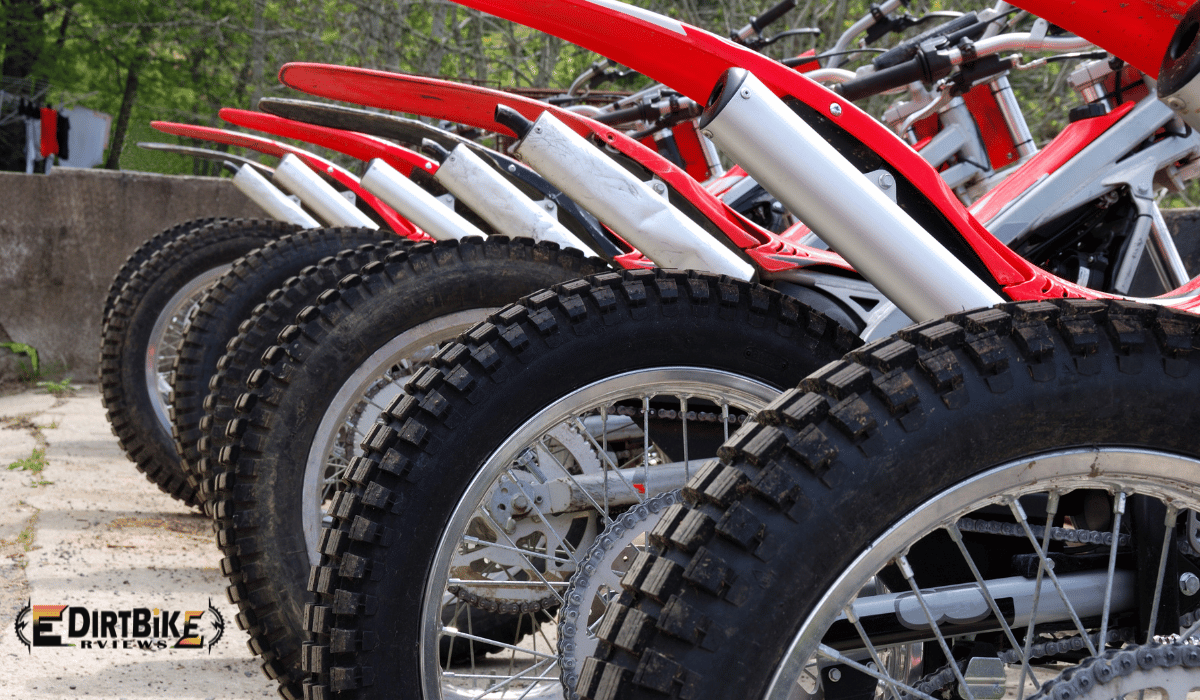
Choosing the right tires for your electric dirt bike is a decision that significantly influences both performance and safety. Tires are the sole contact point between the bike and the ground, playing a pivotal role in how the bike handles various terrains, responds to rider inputs, and performs under different riding conditions. This selection process becomes even more critical with electric dirt bikes, where the unique characteristics of electric power delivery can affect tire wear and performance.
Table of Contents
Selecting the Right Tires for Electric Dirt Bikes
The right tires can transform the riding experience, offering improved traction, stability, and confidence on the trail. Electric dirt bikes, known for their instant torque and consistent power output, require tires that can handle the immediate force and provide adequate grip to efficiently transfer this power into forward motion. The selection is not just about the tire’s ability to endure the power but also its compatibility with the bike’s design and the rider’s style, ensuring that the bike’s capabilities are fully utilized.
Impact of Tires on Performance and Safety
The impact of tires on an electric dirt bike’s performance is profound. Well-chosen tires enhance handling, allowing for sharper turns, better control of technical sections, and more effective braking. They can also reduce the risk of slippage and accidents, particularly in challenging weather or rugged terrain, safeguarding the rider. On the safety front, the right tires lessen the wear on the bike’s components, promote longer battery life by requiring less power to overcome rolling resistance, and generally contribute to a more stable and predictable ride.
Selecting the right tires for an electric dirt bike is crucial to ensuring optimal performance and safety. The choice should be informed by understanding how different tires interact with electric bike dynamics, the intended riding environment, and the rider’s preferences and skills. With the appropriate tires, riders can maximize their enjoyment and control, making every ride safer and more satisfying.
Understanding Tire Basics
Types of Dirt Bike Tires and Their Characteristics
Dirt bike tires come in various types, each designed to perform best under specific conditions:
- Knobby Tires: Characterized by large, spaced-out knobs, these tires offer excellent traction on soft, muddy, or loose surfaces. The knobs dig into the terrain, providing a grip that is essential for off-road riding.
- Intermediate Tires: These are the all-rounders of dirt bike tires, featuring medium-sized knobs with closer spacing. They perform well on various terrains, from soft dirt to hard-packed trails.
- Hard Terrain Tires: Designed for riding on hard, rocky, or compacted surfaces, these tires have smaller, tightly spaced knobs. They offer a larger contact area with the ground, enhancing grip on hard surfaces.
Tire Size and Its Implications for Riding
The size of the tire, typically denoted by width and diameter measurements, affects the bike’s handling and performance. Larger tires may provide better traction and stability due to a larger contact patch with the ground but can also increase rolling resistance, affecting acceleration and battery efficiency. Conversely, smaller tires might offer quicker handling and less rolling resistance but could reduce stability and traction.
Tread Patterns and Terrain Compatibility
The tread pattern on a dirt bike tire plays a crucial role in determining its suitability for different terrains:
- Mud Treads: Designed with wide-spaced, large knobs to prevent mud from clogging, these treads are ideal for wet and muddy conditions, allowing the tire to penetrate the surface and find traction.
- Sand Treads: These tires have a paddle-like design, optimal for loose, sandy terrains where the wide-spaced knobs help in creating a scooping action for better propulsion.
- Rocky Treads: Featuring smaller, closer-spaced knobs and often made of more complex rubber compounds, these tires are designed to grip onto rocky surfaces and resist puncture or damage from sharp edges.
In summary, understanding the basics of dirt bike tires, including the types, sizes, and tread patterns, is essential for selecting the right tire for your electric dirt bike. The choice should align with the typical riding conditions and personal riding style to ensure optimal trail performance, safety, and enjoyment.
Special Considerations for Electric Dirt Bikes
How Electric Dirt Bike Performance Influences Tire Choice
Electric dirt bikes exhibit characteristics that distinctly influence tire selection. Electric motors’ instant torque and continuous power delivery can lead to faster tire wear, especially if the tires are not designed to handle such forces. The acceleration characteristics of electric bikes mean that tires need to have excellent traction to prevent slipping and to utilize the motor’s power effectively. Additionally, since electric dirt bikes often have a heavier build due to the battery, choosing tires that can support the additional weight without compromising performance is crucial.
Durability and Wear Considerations for Electric Bikes
The durability of tires on electric dirt bikes is a significant consideration due to the unique demands of electric propulsion. Tires must be robust enough to withstand the constant torque and be made of compounds that resist wear from the electric motor’s immediate power output. The regenerative braking standard in electric dirt bikes also affects tire wear patterns, potentially causing the rear tire to wear down differently than on a gas-powered motorcycle. Therefore, when selecting tires for an electric dirt bike, it’s essential to consider those explicitly designed for electric or high-performance vehicles, as they are more likely to offer the durability and wear characteristics suited to the bike’s performance profile.
In summary, the performance attributes of electric dirt bikes require careful consideration when choosing tires. The right tires for an electric dirt bike should accommodate the machine’s power and weight and offer durability and wear characteristics that align with the unique aspects of electric biking. This careful selection ensures sustained performance and enhances the overall riding experience.
Selecting Tires for Different Riding Conditions
Tires for Muddy and Wet Conditions
When riding an electric dirt bike in muddy and wet conditions, tires with deep, wide-spaced knobs are ideal. These tread patterns help clear mud quickly and prevent the tire from clogging, maintaining traction in slippery conditions. The knobs’ depth ensures that the tire can penetrate the surface layer of mud to reach firmer ground beneath, providing better grip. Tires designed for wet conditions often have softer rubber compounds to enhance grip on slick surfaces.
Tires for Sandy or Loose Terrain
In sandy or loose terrain, where flotation and stability are critical, tires with a broader profile and flexible knobs are preferable. These features allow the tire to float over the sand rather than digging in, preventing the bike from bogging down. The flexible knobs adapt to the shifting sands, providing a larger contact area and improving traction. The tire’s construction should be durable enough to withstand the abrasive nature of sand, which can quickly wear down the tread.
Tires for Rocky or Hard-Packed Trails
Riding on rocky or hard-packed trails requires tires with solid sidewalls and dense, less pronounced tread patterns. These characteristics prevent punctures from sharp rocks and provide a stable ride on hard surfaces. The tread should offer enough grip to handle the terrain’s irregularities while being smooth enough to maintain contact with the ground. Hard compound tires are typically used in these conditions as they are more resistant to wear and tear and provide better stability at higher speeds.
In conclusion, selecting the right tires for specific riding conditions is crucial for enhancing the performance and safety of an electric dirt bike. To ensure optimal traction, stability, and durability, the tire choice should be based on the terrain’s nature, whether muddy, sandy, or rocky. By matching the tires to the expected riding conditions, riders can maximize their electric dirt bike’s capabilities and enjoy a safer, more satisfying experience on the trails.
Maintenance and Care for Dirt Bike Tires
Regular Inspection and Maintenance Routines
Proper tire maintenance is essential for ensuring the safety and performance of your electric dirt bike. Regular inspections should be part of your maintenance routine. Check for signs of wear, such as tread depth reduction, and look for damage like cuts, punctures, or embedded objects. Tire pressure should be checked before each ride, as incorrect pressure can affect the bike’s handling, increase tire wear, and potentially lead to tire failure.
Rotating the tires periodically can promote even wear, especially if one tire tends to wear down faster than the other due to the bike’s weight distribution or riding style. Cleaning the tires and removing debris from the treads after rides can also extend their life and prevent premature wear.
When to Replace Your Dirt Bike Tires
Knowing when to replace your dirt bike tires is crucial for maintaining optimal performance and safety. Key indicators for replacement include:
- Tread Wear: If the tread depth exceeds the manufacturer’s recommended limit, it’s time for a new tire. Worn treads compromise the tire’s grip and can significantly affect the bike’s handling, especially in adverse conditions.
- Age and Condition: Over time, tires degrade due to exposure to elements, even if they’re not used frequently. Cracks, hardening, or noticeable performance decline are signs that the tires need replacing.
- Damage: Any signs of severe damage, like deep cuts, punctures, or sidewall bulges, indicate that a tire needs to be replaced immediately to avoid the risk of blowouts or accidents.
Regular maintenance and timely tire replacement are vital for ensuring the performance and safety of your electric dirt bike. By keeping a close eye on the condition of your tires and addressing any issues promptly, you can enjoy a reliable and safe riding experience.
Personal Insights on Tire Selection for Electric Dirt Bikes
Experiences with Different Tires in Various Conditions
Through years of riding and testing various electric dirt bikes, I’ve learned that tire selection can dramatically alter the bike’s performance and the rider’s experience. For instance, while navigating muddy trails, tires with aggressive tread patterns provided the necessary grip to power through without getting stuck. In contrast, when riding on sandy dunes, wider tires with a paddle-like design offered the flotation needed to glide over the surface rather than digging in.
One particular experience that stands out was riding with a set of high-performance tires on rocky terrain. The tires’ reinforced sidewalls and specific tread design provided exceptional stability and traction, making a noticeable difference in handling sharp rocks and hard-packed paths. This experience underscored the importance of choosing tires specifically designed for the terrain and conditions of the ride.
Recommendations Based on Riding Style and Bike Specifications
Selecting the right tires for your electric dirt bike involves considering your riding style and the bike’s specifications. Tires with durable construction and aggressive tread patterns are essential for aggressive riders who push their bikes to the limits on challenging terrains. These riders should look for tires that can withstand high torque and provide excellent traction in various conditions.
Conversely, a less aggressive tread pattern might be more appropriate for casual riders or those using their bikes primarily on smooth trails, offering a balance between grip and riding comfort. Additionally, the weight and power output of the electric dirt bike should influence tire choice. Heavier and more powerful bikes require tires that can handle the extra load and power, emphasizing the need for durability and robustness.
In conclusion, my experiences have taught me that there is no one-size-fits-all answer to tire selection for electric dirt bikes. Instead, the best choice depends on careful consideration of the riding conditions, personal riding style, and the bike’s specific capabilities and characteristics. With the right tires, riders can enhance the performance and enjoyment of their electric dirt biking adventures.
Frequently Asked Questions (FAQs)
What size tires are best for an electric dirt bike?
The best tire size for an electric dirt bike depends on the bike’s design, intended use, and rider preference. Generally, larger tires provide better stability and are more capable of handling various terrains, making them suitable for off-road conditions. However, smaller tires might offer more agility and faster acceleration. When selecting tire size, it’s essential to refer to the bike manufacturer’s recommendations and consider the type of terrain you plan to ride on.
Do e-bikes require special tires?
While electric dirt bikes don’t necessarily require special tires, it’s advisable to choose tires that can withstand the unique demands of electric propulsion, such as instant torque and increased weight. Tires designed for electric bikes often have reinforced structures to handle the additional stress and provide better durability and performance.
Do I need ebike-specific tires?
Using ebike-specific tires can be beneficial due to their optimized design for electric bikes’ weight and power output. These tires usually feature more durable materials and construction to cope with electric dirt bikes’ higher torque and speeds. While not mandatory, ebike-specific tires can enhance the performance and safety of your ride.
How often should I replace the tires on my electric dirt bike?
Tire replacement frequency on an electric dirt bike depends on usage, terrain, and tire quality. Regularly inspect your tires for wear and damage, and replace them when the tread depth is below the recommended level or if there are signs of significant wear, damage, or aging. Active riders might need to replace their tires once a season or more, depending on the riding conditions.
These FAQs cover the essential aspects of tire selection and maintenance for electric dirt bikes, guiding riders in making informed decisions to optimize their bike’s performance and safety.
Conclusion
Choosing the right tires for an electric dirt bike is a critical decision that significantly impacts the bike’s performance, safety, and overall riding experience. This comprehensive discussion has highlighted the factors riders must consider, including tire size, tread pattern, terrain compatibility, and whether to opt for e-bike-specific tires.
Recap of Key Points on Choosing the Right Tires
- Tire Size and Type: Selecting the appropriate size and type of tire for your electric dirt bike is essential for optimal performance and handling. Your choices will vary based on terrain and your personal riding style.
- Tread Patterns: The tread pattern should match the riding conditions you most frequently encounter, whether mud, sand, rocky trails or hard-packed dirt paths.
- Durability and Performance: Considering the unique demands of electric dirt bikes, such as higher torque and potentially heavier weights, it’s advisable to choose tires with enhanced durability and performance.
The Significance of Tire Selection in Enhancing the Electric Dirt Biking Experience
The right tires can transform an electric dirt bike ride from good to exceptional. They ensure better traction, improved stability, and a safer riding experience, allowing riders to fully exploit their electric bikes’ capabilities. The silence and power of electric dirt biking, combined with the perfect tire choice, can elevate the adventure, allowing riders to confidently tackle diverse terrains and enjoy the journey to its fullest.
In summary, tire selection is a fundamental aspect of electric dirt bike preparation that should not be overlooked. With the right tires, riders can enhance their electric dirt biking experience, ensuring each ride is as thrilling, safe, and satisfying as possible. By understanding and applying this article’s insights, riders can make informed decisions that optimize their bike’s performance and suit their riding preferences.
- Electric Dirt Bike For Kids1 year ago
Electric Dirt Bikes Under $1000: Your Ultimate Guide to Affordable Off-Road Adventure
- Electric Dirt Bike For Adults1 year ago
Top 11 Electric Dirt Bikes for Adults in 2024: Unleashing the Future of Off-Road Adventure
- Electric Dirt Bike For Adults1 year ago
Unleashing Power and Innovation: The Stark Varg Electric Dirt Bike Reviewed
- Electric Dirt Bike For Adults1 year ago
Unleashing the Thrill: MotoTec Venom 72V 12000W Electric Dirt Bike Review
- Electric Dirt Bike For Adults1 year ago
Unveiling the Segway Dirt eBike X260: Power, Performance, and Adventure
- Electric Dirt Bike For Adults1 year ago
Unleashing the Power of the Rawrr Mantis: The Ultimate Electric Dirt Bike Experience
- Electric Dirt Bike For Kids1 year ago
Blitzshark 36V 650W Kids Electric Dirt Bike: An In-Depth Review
- Electric Dirt Bike For Adults1 year ago
Conquering Trails with the Sur-Ron Light Bee X: A Comprehensive Review














